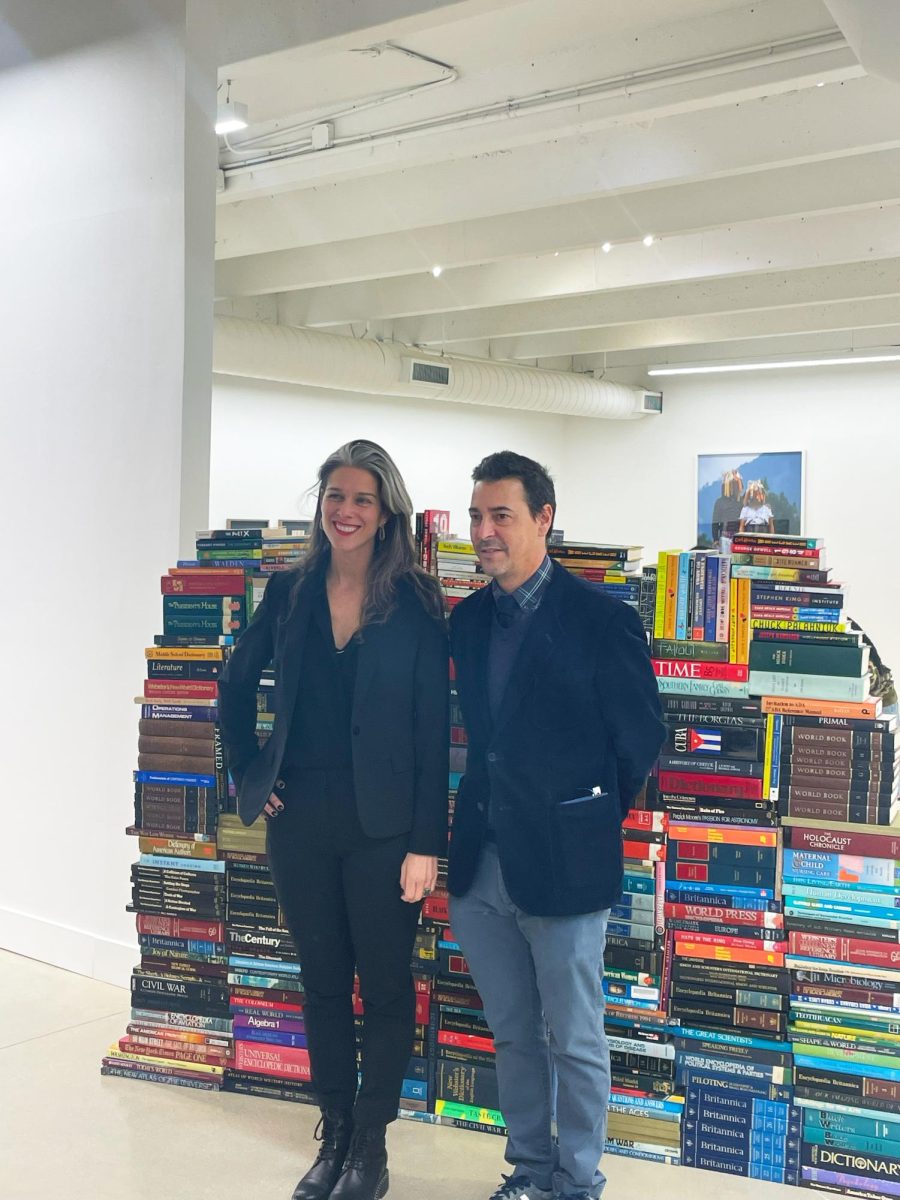With Bad Bunny grappling between these two identities, which version of the Puerto Rican rapper do fans prefer? More importantly, what makes Benito Antonio Martínez Ocasio so popular?
In a conversation with STEM Office 305, I posed this question to science teacher Mrs. Marlen Nuñez de Varela: “What do you like about Bad Bunny’s music?” Suddenly, everyone in the room had an opinion to share.
“‘Un Verano Sin Ti’ was more of a vibe [than the latest album],” said Mrs. V.
“I don’t think he’s bringing anything new to the table,” said Mr. Jesse Velazquez.
“I like the guy,” said Mr. Luis Felipe.
Mr. Fritz Morency shook his head.
The range of opinions I heard in that office reflect more widespread feelings among the RE community. Everyone has something to say about Bad Bunny. With the exception of Taylor Swift, he’s the defining artist of the moment, the artist you can’t escape hearing or having an opinion on—especially in Miami. But his latest album, “Nadie Sabe Lo Que Va a Pasar Mañana,” tested his fans and created divisions in ways that have revealed a hidden complexity to his music—a duality that fans and haters alike don’t tend to give him credit for.
“Nadie Sabe” was not a fan favorite. “I’m not the biggest fan,” said Francesca Lopez ’24. Fans were caught off guard by the 22-track album, which dropped on October 13, 2023 and made a massive departure from its well-received predecessor, 2022’s “Un Verano Sin Ti.”
“Verano” was an eclectic melting-pot of Latin sounds, containing everything from merengue to mambo to cumbia to Latin pop. It showcased Bad Bunny’s ability to encompass so many different aspects of Latin culture and musical styles while still making a cohesive album, ultimately allowing it to appeal to many groups of people.
“Verano” was, for many RE listeners, iconic. “I think ‘Un Verano Sin Ti’ perfectly captures what summer feels like. There’s a song for every moment, dancing at the beach, driving in the sunset, ice cream with friends, anything,” said Claudia Colina ’25.
“Nadie Sabe,” on the other hand, is almost exclusively Latin trap, a sound Bad Bunny’s RE fanbase admits they found challenging to connect with. The album’s repetitive beats have made his listeners yearn for the varying, experimental, and nostalgic styles of “Un Verano Sin Ti.”
“I think ‘Nadie Sabe’ doesn’t give people that feeling that ‘Un Verano Sin Ti’ did,” Colina continued.
But “Nadie Sabe,” albeit not a fan favorite, is an ode to Bad Bunny’s early days, an era that most of his more recent fans forget. Before “Verano,” he was a Latin trap artist almost exclusively. His debut album, X 100PRE, was a Latin trap album that established Benito as a Spanish rapper. His following projects, in chronological order, were “OASIS,” “YHLQMDLG,” “LAS QUE NO IBAN A SALIR,” “EL ÚLTIMO TOUR DEL MUNDO,” and “Un Verano Sin Ti.” “Verano,” which is considered reggaeton, is the exception, not the rule. Also, many of the singles that helped boost Bad Bunny’s fame, such as “Mía,” “Yo Perreo Sola,” “La Canción,” and “Dakiti,” were the few reggaeton songs off each of these Latin trap albums.
His return to trap should not have been a surprise. One track from “Verano” hinted that Bad Bunny would release a trap album after being “MIA” for a while: “yo después / Saco un disco de trap / No me busque’ / Que no me va’ a encontrar.” This lyric from “Me Fui de Vacaciones” translates to “After, I’ll release a trap record, don’t look for me because you won’t find me.” As promised, he remained off the grid for a while before surprising the world with “Nadie Sabe.”
Nevertheless, within the album, his audience can feel the inherent tension in Bad Bunny’s music. It contains the authenticity of his Latin trap days, but what made his music so globally popular were the songs that ventured outside of that box, blending a wide variety of styles together and taking new steps for Latin music.
For Ms. V., Bad Bunny’s appeal is all about exposing a new generation to the classic sounds of Latin genres. Ms. V. grew up on old school reggaeton, such as Don Omar and Daddy Yankee, and now she listens to Bad Bunny because “he puts a twist on a throwback… kind of like the shows like Magnum P.I. that were around in [her] day and now they’re getting remade.”
Piano accompanist and music director Mr. Arn Xu, however, appreciates “Nadie Sabe” precisely because it isn’t an attempt to put a spin on classic sounds and attract new listeners; instead, it’s “a comeback album.” “His newest album had a more pointed message behind it… he’s caring less about other people’s judgment, and he understands his value and what he wants to do as an artist,” Mr. Xu said.
After all, he added, Benito “does whatever he wants.”
If Bad Bunny’s fans have such divided opinions about his latest album, why do they remain loyal to his music? For Lopez, it’s because she admires his authenticity, even if she didn’t connect with “Nadie Sabe.” “Bad Bunny connects to his own culture, his Puerto Rican culture, through music,” she said, providing an opportunity for people outside the culture to understand it better.
And that might be the key to Bad Bunny: the way he draws listeners in with the accessible, upbeat tone of his mainstream music, but once a dedicated listener begins to explore his discography, they can soon discover the other side of his artistry, which is more about his heritage, his culture, and is darker in tone. Fans get to explore this different side of Benito’s identity through listening to all eras of his music career, eventually learning about his roots in Latin trap.
For Ian Fox ’24, that’s exactly what happened. When he started listening to Bad Bunny, he appreciated the “wide range of genres that he incorporates into his different albums.” But after diving into each album, he came to appreciate all sides of Benito, not just the mainstream side that most fans gravitate towards.
And even if you don’t go down a Bad Bunny rabbit hole, even if you don’t understand what he’s saying, you’ll find it hard to deny that his music has a certain “Efecto” on people—a sound that brings them together.
“He has a way of connecting people,” said Diana Gonzalez ’24. “Even if you don’t understand the language, you can dance to it. You can have fun with it.”







